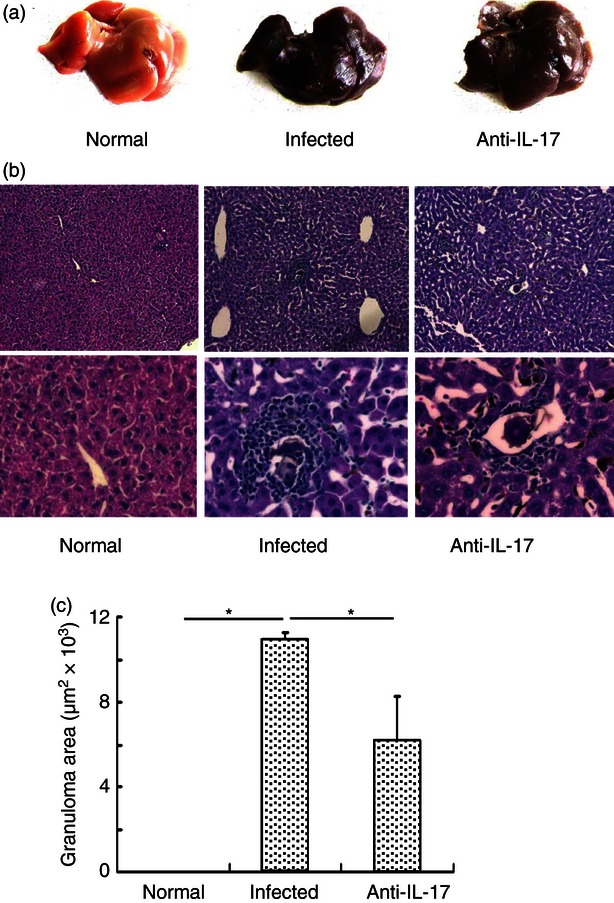Figure 4.

Reduction of hepatic granulomatous inflammation by anti-interleukin-17 (IL-17) monoclonal antibody (mAb) in vivo. Thirty female C57BL/6 mice were divided into three groups, normal group, infected group, anti-mouse IL-17 group. The infected group and anti-mouse IL-17 group were infected with 40 ± 5 cercariae of Schistosoma japonicum per mouse. For the infected and anti-IL-17 group, 62·5 μg control IgG mAb or anti-IL-17 mAb per mouse were administered intraperitoneally every 3 days, a total of four times, respectively. Six weeks after the infection, the mice were killed. (a) The gross appearance of the three groups. (b) Livers were flushed with 0·01 m PBS three times, fixed in 10% formalin, embedded in paraffin and sectioned. Sections of the liver of normal mice (left panels), infected mice (middle panels) and anti-mouse IL-17 mAb mice (right panels) were examined by haematoxylin & eosin staining (original magnification × 100 for upper panels and × 400 for lower panels). In the control IgG mAb group and anti-IL-17 mAb group, granuloma could be observed. (c) Sizes of the granulomas were measured by computer-assisted morphometric analysis. Only granulomas with a visible central egg were analysed for accuracy. Between 80 and 100 granulomas for each group were measured under a microscope (*P < 0·05, the error bars indicate SD).
